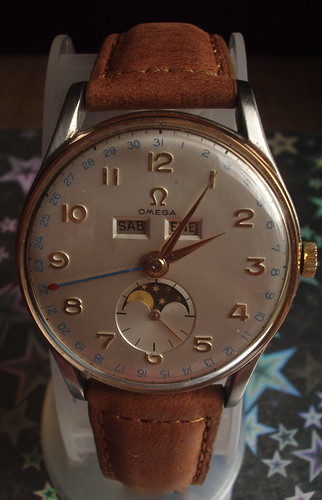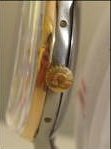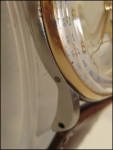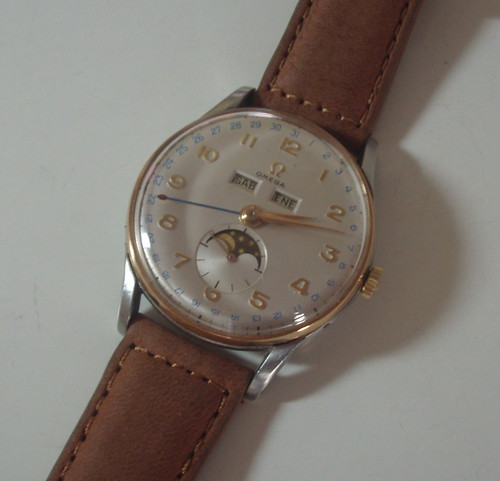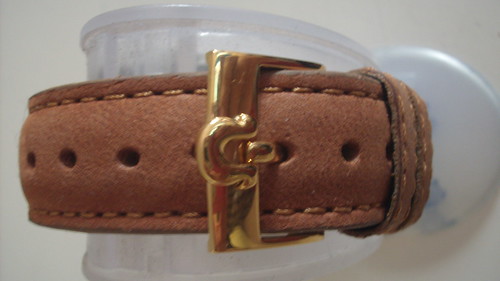 The Geneve Dynamic line was launched in 1967. According to Omega, the elliptical shape of the watch is designed to conform to the anatomy of the wrist making it one of the first ergonomically designed watch. The watch also featured a band made out of Corfam, a material that "breathes" and makes it more comfortable to wear the watch.
The Geneve Dynamic line was launched in 1967. According to Omega, the elliptical shape of the watch is designed to conform to the anatomy of the wrist making it one of the first ergonomically designed watch. The watch also featured a band made out of Corfam, a material that "breathes" and makes it more comfortable to wear the watch.True to the spirit of the swinging 70's, this watch came out in a variety of dial designs. I purchased this particular watch because its dial design is not the common design that is found, making it "valuable" from a collection standpoint.
This is a cal. 752, 24 jewels day-date movement. Per the Omega database, the serial number of 32xxxxxx dates this watch to 1970. Access to the internal components is through the dial which requires the use of Tool 107. This is the single "fly in the ointment" aspect of this particular watch - the "Tool 107" inscription found in the caseback can only be faintly seen due to an overzealous effort in polishing the watch by the previous owner. This slightly reduces the over-all value of the watch.
The dial, crystal, crown, movement and bracelet are all signed. It retains the original luminous white/black hands and orange sweep second hand.
The black dial face has a "Formula 1" checkered flags design on the outer markers track and has orange hour markers on white squares. The black color looks washed out due to camera/lighting conditions in the picture but it is inky black and in excellent condition. It also has the original stainless steel integrated omega signed bracelet and deployment buckle - ST 1153/38. Keeps great time - not bad for a 39 year old watch.






